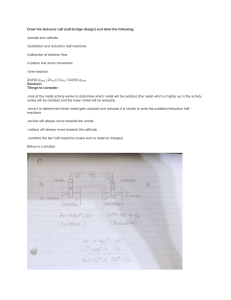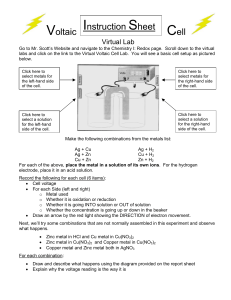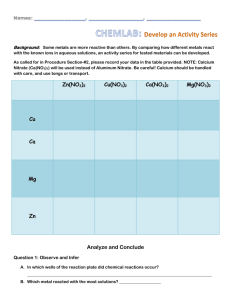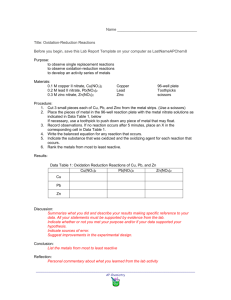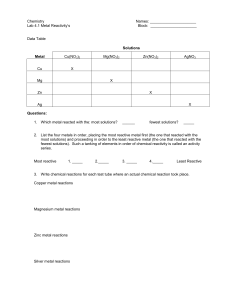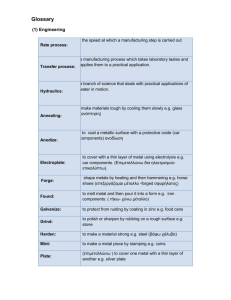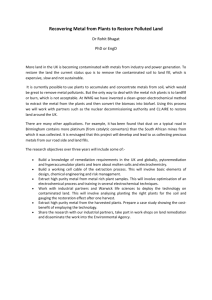In this experiment, you will establish the activity series for five ions
advertisement
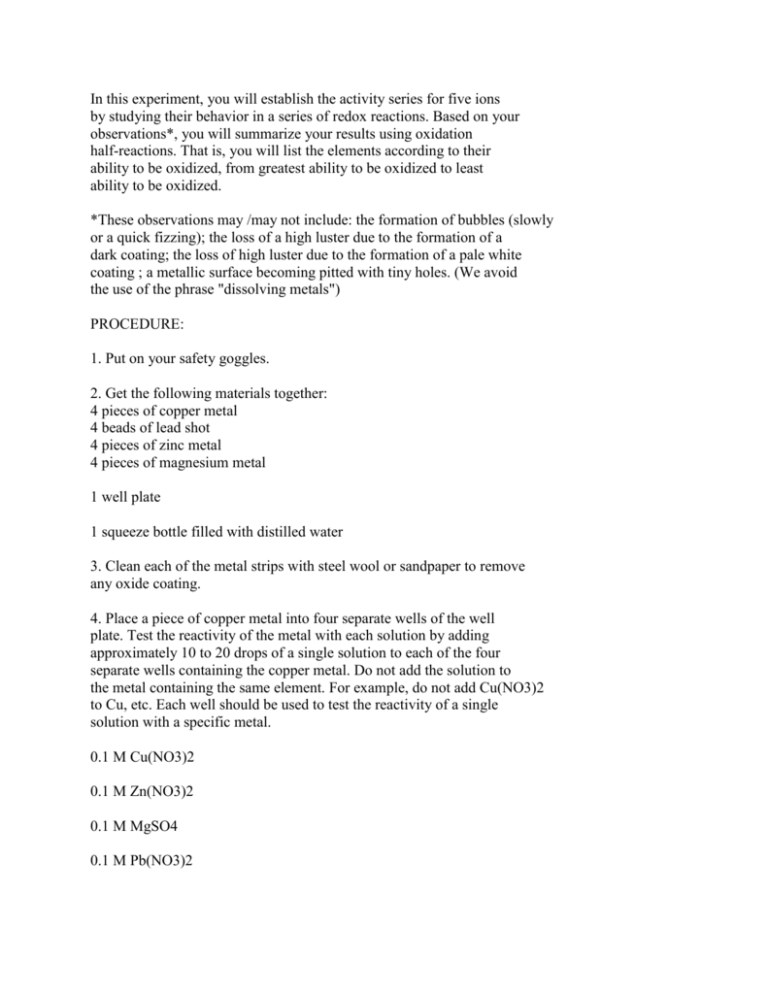
In this experiment, you will establish the activity series for five ions by studying their behavior in a series of redox reactions. Based on your observations*, you will summarize your results using oxidation half-reactions. That is, you will list the elements according to their ability to be oxidized, from greatest ability to be oxidized to least ability to be oxidized. *These observations may /may not include: the formation of bubbles (slowly or a quick fizzing); the loss of a high luster due to the formation of a dark coating; the loss of high luster due to the formation of a pale white coating ; a metallic surface becoming pitted with tiny holes. (We avoid the use of the phrase "dissolving metals") PROCEDURE: 1. Put on your safety goggles. 2. Get the following materials together: 4 pieces of copper metal 4 beads of lead shot 4 pieces of zinc metal 4 pieces of magnesium metal 1 well plate 1 squeeze bottle filled with distilled water 3. Clean each of the metal strips with steel wool or sandpaper to remove any oxide coating. 4. Place a piece of copper metal into four separate wells of the well plate. Test the reactivity of the metal with each solution by adding approximately 10 to 20 drops of a single solution to each of the four separate wells containing the copper metal. Do not add the solution to the metal containing the same element. For example, do not add Cu(NO3)2 to Cu, etc. Each well should be used to test the reactivity of a single solution with a specific metal. 0.1 M Cu(NO3)2 0.1 M Zn(NO3)2 0.1 M MgSO4 0.1 M Pb(NO3)2 0.1 M HCl "..... There's a bit more to the rest of the lab as to how we ask the kids to manipulate the data ... but it works pretty well. The key is to be sure the metals have been cleaned of oxides and such ....It's a nice way to keep oxidation in the forefront of the course.... Now, we do use lead in this experiment and I know some people shrink at that for safety and environmental reasons - but we take precautions as to disposal. It is, the weakest portion of the lab as well (unless cleaned well, bubbles of H2 are tough to see) - and small squares work better - but we try to reduce the amount needed for disposal reasons. The residual metals and fluids (especially the Pb and Pb (II)) are deposited in a beaker to be disposed of properly...And everybody washes up because of the lead and steel wool.
